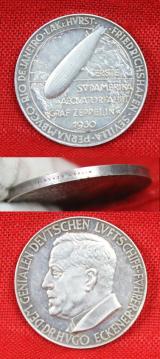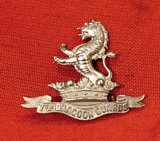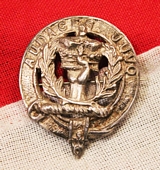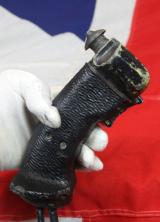A Magnificent & Fabulous Quality Antique French Rococo Silver Table Lamp
A wonderful example of the finest antique silver plate. Superlative quality of the highest grade, and of the most incredible beauty, from the Rococo Revival period that emerged from the King Louis Phillipe and Second Empire eras in France, and was then adapted in England. Revival of the rococo style was seen all throughout Europe during the 19th century within a variety of artistic modes and expression including decorative objects of art, paintings, art prints, furniture, and interior design. In much of Europe and particularly in France, the original rococo was regarded as a national style, and to many, its re-emergence recalled national tradition. Rococo revival epitomized grandeur and luxury in European style and was another expression of 19th century romanticism and the growing interest and fascination with natural landscape. Louis Philippe (1830-1848)
The rising bourgeoisie in France demanded rococo decorative-art objects as a reflection of status, wealth, and material possession. The bourgeois consumer purchased objects and furnishings from a variety of revival styles, including rococo, for its significance in historicizing opulence and grandeur.
Modern French Rococo furniture and decorative arts were characterized by their opulence elegance and grace. Its ornamentation consisted of delicate foliage and intricate details.13.5 inches x 8 inches. Excluding light fitting. Very heavy quality. read more
895.00 GBP
A Very Fine 1920's to 30's Silver Gilt & Enamel Graf von Zeppelin Demi-Tasse Cabinet Spoon, With Enamel Portrait of Zeppelin & a Zeppelin Airship in the Spoon Bowl
Superb condition and a most charming and collectable object d'art. Ferdinand von Zeppelin served as an official observer with the Union Army during the American Civil War. During the Peninsular Campaign, he visited the balloon camp of Thaddeus S. C. Lowe. Lowe sent the curious von Zeppelin to another balloon camp where the German-born aeronaut John Steiner could be of more help to the young man. His first ascent in a balloon, made at Saint Paul, Minnesota during this visit, is said to have been the inspiration of his later interest in aeronautics.
Zeppelin's ideas for large dirigibles was first expressed in a diary entry dated 25 March 1874. Inspired by a recent lecture given by Heinrich von Stephan on the subject of "World Postal Services and Air Travel", he outlined the basic principle of his later craft: a large rigidly-framed outer envelope continuing a number of separate gasbags. In 1887 the success of Charles Renard and Arthur Krebs' airship La France prompted him to send a letter to the King of Württemberg about the military necessity for dirigibles and the lack of German development in this field. He went on to start the Zeppelin Airship Co. and his name lived on in German legend as the great airship pioneer of international travel and airship warfare. read more
235.00 GBP
A Rare German Aerospace Zeppelin First Flight To South America, .835 Silver Medal, 1930 Made In Berlin
Silver medal 1930 (O. Glöckler) The "LZ 127" made its first trip to South America. bust of dr. H. Eckener to the left / Airship over the Atlantic between Europe and South America. Edge punch: (half moon) 835 PR. BERLIN COIN. 36 mm, 24.59 Min. Scratches. excellent ++ condition
LZ 127 Graf Zeppelin (Deutsches Luftschiff Zeppelin 127) was a German passenger-carrying, hydrogen-filled rigid airship that flew from 1928 to 1937. It offered the first commercial transatlantic passenger flight service. Named after the German airship pioneer Ferdinand von Zeppelin, a count (Graf) in the German nobility, it was conceived and operated by Dr. Hugo Eckener, the chairman of Luftschiffbau Zeppelin.
Graf Zeppelin made 590 flights totalling almost 1.7 million kilometres (over 1 million miles). It was operated by a crew of 36, and could carry 24 passengers. It was the longest and largest airship in the world when it was built. It made the first circumnavigation of the world by airship, and the first nonstop crossing of the Pacific Ocean by air; its range was enhanced by its use of Blau gas as a fuel. It was built using funds raised by public subscription and from the German government, and its operating costs were offset by the sale of special postage stamps to collectors, the support of the newspaper magnate William Randolph Hearst, and cargo and passenger receipts.
After several long flights between 1928 and 1932, including one to the Arctic, Graf Zeppelin provided a commercial passenger and mail service between Germany and Brazil for five years. When the Nazi Party came to power, they used it as a propaganda tool. It was withdrawn from service after the Hindenburg disaster in 1937, and scrapped for military aircraft production in 1940.
A most scarce piece, but remarkably we acquired this fine example thanks to another example that we have. That past medal was spotted by this rare medal's owner on our website, and they offered it to us. It is only the second of its type of this rare medal we have had in over 10 years. read more
260.00 GBP
Original Victorian 7th Dragoon Guards Silver Cap Badge, 1898 1906
A superb example in pristine condition, not hallmarked silver. Crisp and sharp and superb quality. Part of a small collection of original rare Victorian badges we have just been most pleased to acquire. At Dettingen, Cornet Richardson of the 7th received thirty-seven wounds whilst defending the Regimental Standard. This standard is the oldest surviving in the British Army.
7th Dragoon horsemen carried out the last cavalry charge of World War 1 when they galloped for 10 miles to capture LESSINES in BELGIUM and the crossings there over the RIVER DENDRE suffering no casualties themselves, but taking 4 German officers and 167 men prisoners. As was required by higher command this action was completed as the clocks were striking 11 o?clock when hostilities had to stop in accordance with the terms of the Armistice. read more
75.00 GBP
A Queen's South Africa Medal to South African Constabulary Cavalryman.
A rare medal of the Boer War with three bars. Issued to 3rd Class Trooper R.G,Phillips.. 12 squadrons of the SAC were raised in Canada by General Baden-Powell. Many Canadians stayed on to live there after the war's end. One photo in the gallery of a group of SAC probably outside the HQ at Koffiefontein read more
245.00 GBP
1924 Graf Zeppellin Z.R. III, The USS Los Angeles, Airship Medal, For The Flight of The Zeppelin, Previously Known As The LZ126, To America. A Most Rare Example
1000 Hallmarked Silver Coin Medal
GERMANY, Weimarer Republik. 1918-1933. AR Medal (40mm, 25.68 g, 12h). The Flight of Zeppelin LZ126 to America. By A. Holl. Dated 1924. FERDINAND GRAF VON ZEPPELIN, uniformed bust of Ferdinand von Zeppelin right / LZ126 in flight left over Manhattan; Z.R.III above, 1924 below. Kaiser 459. EF, toned.
As part of their reparations payments for the First World War, Germany was required to give its remaining military zeppelins to the victorious Allied powers. This did not sit well with the crews of the ships who, only a week before the Treaty of Versailles was signed, destroyed many of the airships, following the example of their brothers-in-arms at Scapa Flow, who scuttled the German navy earlier that year. Germany was thus required to construct new zeppelins to replace those lost.
Among these was LZ126, destined for service in the United States Navy. The zeppelin was delivered to the US Naval Air Station in Lakehurst, New Jersey on 12 October 1924, and was commissioned into the US Navy as ZR-3, the USS Los Angeles on 25 November. She would be the first of the Navy's brief foray into light-than-air vessels, to be followed by the Shenandoah, Macon, and Akron, and was the only vessel of her class to not succumb to disaster. Zeppelins, always particularly susceptible to the vagaries of winds and weather, were soon overshadowed by the development of vastly more reliable airplanes of the 1930s. The USS Los Angeles was decommissioned in 1932 and was dismantled in 1939. read more
220.00 GBP
Scottish Silver Buchanen 'Audaces Juvo' Clan Glengarry Badge 1930's
Not hallmarked silver. Clan Buchanan Audaces Juvo I Help the Brave. Is an armigerous Scottish clan whose origins are said to lie in the 1225 grant of lands on the eastern shore of Loch Lomond to clergyman Sir Absalon of Buchanan by the Earl of Lennox. A Dexter Hand Holding Up A Ducal Cap Proper., Tufted On The Top With A Rose Gu., All Within Two Laurel-Branches In Orle Vert. Traditionally, the Glengarry bonnet is said to have first appeared as the head dress of the Glengarry Fencibles when they were formed in 1794 by Alexander Ranaldson MacDonell of Glengarry, of Clan MacDonell of Glengarry. MacDonell, therefore, is sometimes said to have invented the glengarry - but it is not clear whether early pictures of civilians or fencible infantry show a true glengarry, capable of being folded flat, or the standard military bonnet of the period merely 'cocked' into a more 'fore-and-aft' shape. The first use of the classic, military glengarry may not have been until 1841, when it is said to have been introduced for the pipers of the 79th Foot by the commanding officer, Lieutenant Colonel Lauderdale Maule.
It was only in the 1850s that the glengarry became characteristic undress headgear of the Scottish regiments of the British Army. By 1860, the glengarry without a diced border and usually with a feather had been adopted by pipers in all regiments except the 42nd (Black Watch), whose pipers wore the full dress feather bonnet. In 1914, all Scottish infantry regiments were wearing dark blue glengarries in non-ceremonial orders of dress, except for the Cameronians (Scottish Rifles) who wore them in rifle green, and the Scots Guards, who wore peaked forage caps or khaki service dress caps. read more
65.00 GBP
A Super & Rare US Civil War Souvenir, An Original US Cavalry Gallagher Carbine Stock.
Ideal for the collector of rare Civil War arms that is not necessarily inclined to buy a full rifle for the several thousands of pounds it would cost, or, for an owner of a Gallagher that needs a replacement stock. If needed as such, it would normally be simply impossible to find an original example, in such wonderful condition, ever available on the collector market.
Fine walnut stock, with all steel furniture including the steel hinged patchbox, steel butt plate and side screw mounts. In superb condition and three figure serial number, 257 [repeated], stamped on the inner steel patch box lid. On the underside are several crudely carved notches, traditionally, are supposed to represent enemy soldiers that have been successfully 'introduced' to the horse soldier's shooting prowess.
The Gallager Carbine was conceived in 1860 by Mahlon J. Gallager. Receiving his patent on the 17th of July 1860, Gallager submitted his design to military trials. The design was approved and Federal forces issued a contract for Richardson and Overman of Philadelphia to produce the carbine. This contract resulted in 22,728 Gallagers to be produced before the end of the American Civil War, which was more than some other breechloading rifles (such as the Joslyn Rifle or Starr Carbine) but no where near as many as the Springfield Model 1861 rifled musket (whose production passed over 1,000,000 during the conflict).
The Gallager Carbine had a rather unusual breechloading design, using a modified version of the more typical lever-action mechanism to open the breech. As was the trend at the time, the lever effectively formed the trigger guard , and when pulled downwards slid the barrel forwards, before tiliting downwards. This then allowed the user to remove the spent cartridge (most commonly with a knife) and insert the new cartridge. The barrel was then pushed back into place, then locked when the lever was put into its upwards position, ready for firing.
Initially the Gallager was manufactured utilising a percussion lock mechanism, largely due to the fact that the quickest (and cheapest) cartridges to produce at the time were made of paper. This mechanism was not modified on later models, despite the use of metallic cartridges. Other features of the Gallager included iron fittings (ie the buttplate of the stock and patchbox) and a lack of a forestock.
The lack of a forestock is not that much of a suprise, however, as the shorter stock meant that the barrel could tilt once it had moved forwards (otherwise the barrel would have to have been allowed to move further to allow the user to load the new cartridge). Furthermore, because there was a lack of a forestock, the Gallager also lacked any form of barrel bands and also lacked the ability to have a bayonet mounted to it. The barrel itself had six grooves forming the rifling pattern and measured 22.25in (0.57m) in length.
Photo in the gallery of a US Civil War Horse Soldier with his carbine, sabre and revolver, also a photo of the complete Civil War Gallaghar Carbine in the Smithsonian read more
450.00 GBP
A Very Interesting Antique Civil War Period Belgian 1850's Colt Navy Copy Patent Infringement Revolver
An Antique Engraved Period Belgian copy Civil War Colt, Model 1851 Navy Percussion Revolver circa, 1850's, SN#.3568 , 6 1/8", .35 cal. octagon steel barrel stamped with (2) inspection/proof marks, a small "CROWN" over "R" and a small on the right side of the barrel just in front of the barrel wedge, with barrel stamped 'Cap System by Americain' and twin cross keys on the top flat with light to moderate pitting
Frame marked; sic "PATEND SYSTEM" on the right side. 5-Shot round cylinder with approx. 20% of the scene remaining possibly of Native American teepees. Two piece grip scales, main steel components are serial numbered and match, the cylinder, trigger, and cylinder ratchet pawl are all numbered 26. The action needs mechanical attention in that the trigger, and cylinder ratchet pawl, are not fitted in place. Several screws [around 5] are missing in order to fully assemble it. A jolly decent example of one of the many gun-makers attempting to infringe on Samuel Colt's Navy revolver of 1851.
Just some rudimentary engineering skills required to fully re-assemble and make good.
SOME COLT HISTORY: Samuel Colt had a difficult time when he patented the PATTERSON revolver in the late 1830's and did not really achieve success until he received a purchase order of 1000 newly designed massive .44 caliber "Walker" revolvers to arm Texas Ranger Captain Samuel Hamilton Walker for the Mexican-American War (1846-1848). The "Walker" Colts were delivered in 1847 which Captain Walker carried a pair into battle and was killed in action by a sniper's bullet while leading a cavalry charge at the Battle of Huamantla on October 9th, 1847.
Samuel Colts business started to flourish attracting world recognition upon the creation of the .31 caliber model 1849 "Pocket" revolver but then skyrocketed when the .36 caliber model 1851 "Navy" revolver took the scene. Colt had the proper patents both domestic and foreign to protect his designs but that did not stop competitors from copying his patterns. Colt was able to establish several license agreement's which includes having a representative at the Belgium proof house to monitor and charge the competitors a fee to have their copies inspected and approved. If approved, the top of the barrel was stamped "COLT BREVETE" indicating that the copy was of good quality and could be sold. However, many foreign gun makers would avoid the proof house and inspection and made their own fake proof marks and Colt Brevete stamps. read more
985.00 GBP
A Fabulous Piece of British Armed Forces Helicopter Aeronautica. A Souvenir of the Falklands War, A Westland Wessex Helicopter Cyclic Control Grip With Wiring
We acquired this from a former SF Falklands War veteran, who brought it back from the South Atlantic. It came from a Westland Wessex helicopter that had, apparently, somewhat, come a cropper. Of course we have no idea which chopper this control grip came from, and it certainly couldn't likely have come from a maritime loss, but none the less it is a great original part of the Westland Wessex, in pretty good condition, considering its circumstances of acquisition. It bears a serial number and its wiring portion.
Around 55 Westland Wessex HU.5s participated in the Falklands War, fighting in the South Atlantic in 1982. On 21 May 1982, 845 Squadron's Wessex HU.5s supported British landings on East Falkland. The type was heavily used throughout the conflict for the transportation and insertion of British special forces, including members of the Special Air Service (SAS) and the Special Boat Service (SBS). A total of nine Wessex (eight HU.5s and one HAS.3) were lost during the Falklands campaign. Two HU.5s of 845 Squadron crashed on the Fortuna Glacier in South Georgia during an attempt to extract members of the SAS during a snow storm, six of 848 Squadron's Wessex HU.5s were lost when the container ship Atlantic Conveyor was sunk and the HAS.3 aboard HMS Glamorgan was destroyed when the ship was struck by an Exocet missile.
The Falklands War was a ten-week undeclared war between Argentina and the United Kingdom in 1982 over two British dependent territories in the South Atlantic: the Falkland Islands and its territorial dependency, South Georgia and the South Sandwich Islands.
The conflict began on 2 April, when Argentina invaded and occupied the Falkland Islands, followed by the invasion of South Georgia the next day. On 5 April, the British government dispatched a naval task force to engage the Argentine Navy and Air Force before making an amphibious assault on the islands. The conflict lasted 74 days and ended with an Argentine surrender on 14 June, returning the islands to British control. In total, 649 Argentine military personnel, 255 British military personnel, and three Falkland Islanders were killed during the hostilities.
The conflict was a major episode in the protracted dispute over the territories' sovereignty. Argentina asserted (and maintains) that the islands are Argentine territory, and the Argentine government thus characterised its military action as the reclamation of its own territory. The British government regarded the action as an invasion of a territory that had been a Crown colony since 1841. Falkland Islanders, who have inhabited the islands since the early 19th century, are predominantly descendants of British settlers, and strongly favour British sovereignty. Neither state officially declared war, although both governments declared the islands a war zone.
The conflict has had a strong effect in both countries and has been the subject of various books, articles, films, and songs. Patriotic sentiment ran high in Argentina, but the unfavourable outcome prompted large protests against the ruling military government, hastening its downfall and the democratisation of the country. In the United Kingdom, the Conservative government, bolstered by the successful outcome, was re-elected with an increased majority the following year. The cultural and political effect of the conflict has been less in the UK than in Argentina, where it has remained a common topic for discussion.
Diplomatic relations between the United Kingdom and Argentina were restored in 1989 following a meeting in Madrid, at which the two governments issued a joint statement. No change in either country's position regarding the sovereignty of the Falkland Islands was made explicit. In 1994, Argentina adopted a new constitution, which declared the Falkland Islands as part of one of its provinces by law. However, the islands continue to operate as a self-governing British Overseas Territory read more
325.00 GBP











